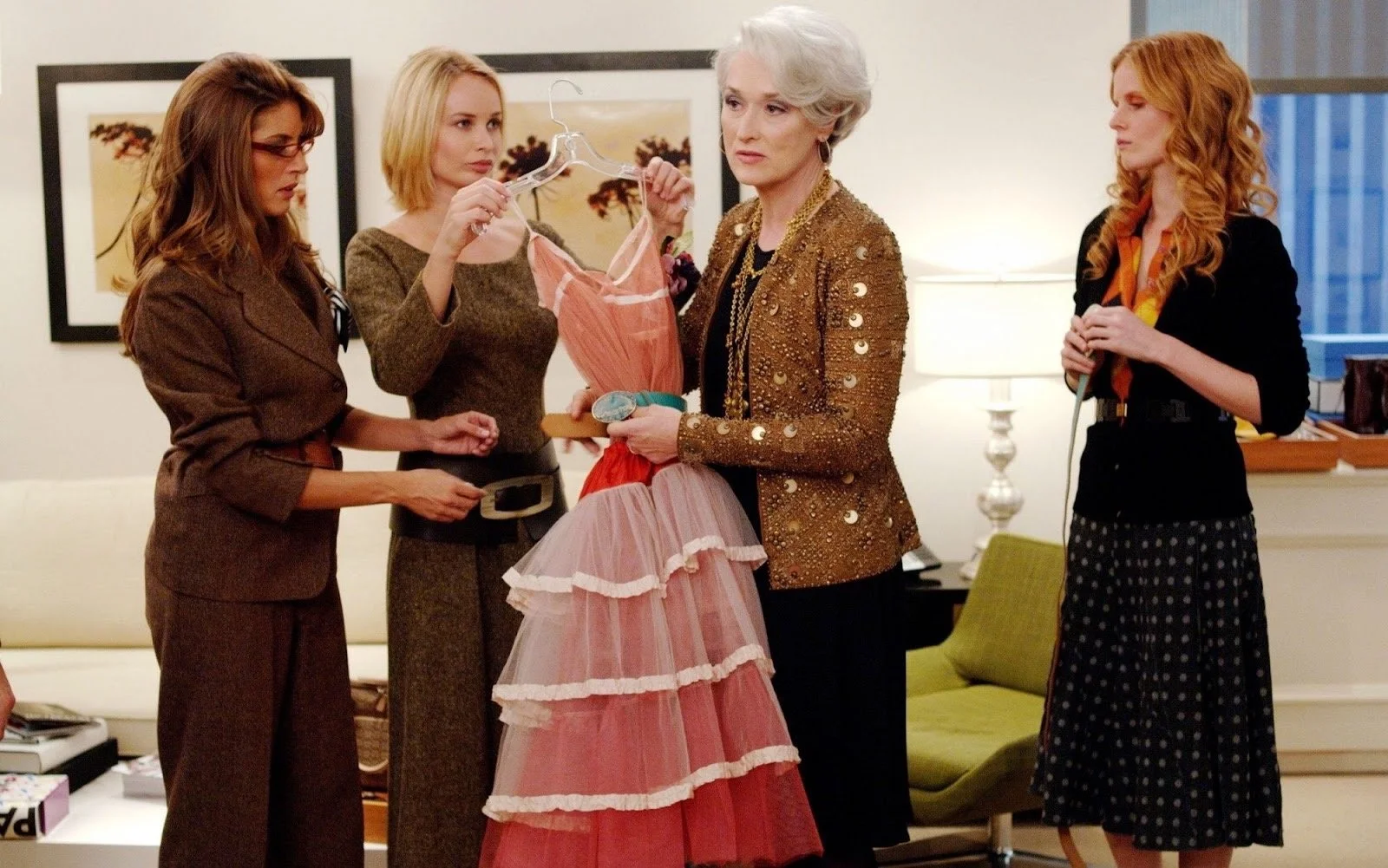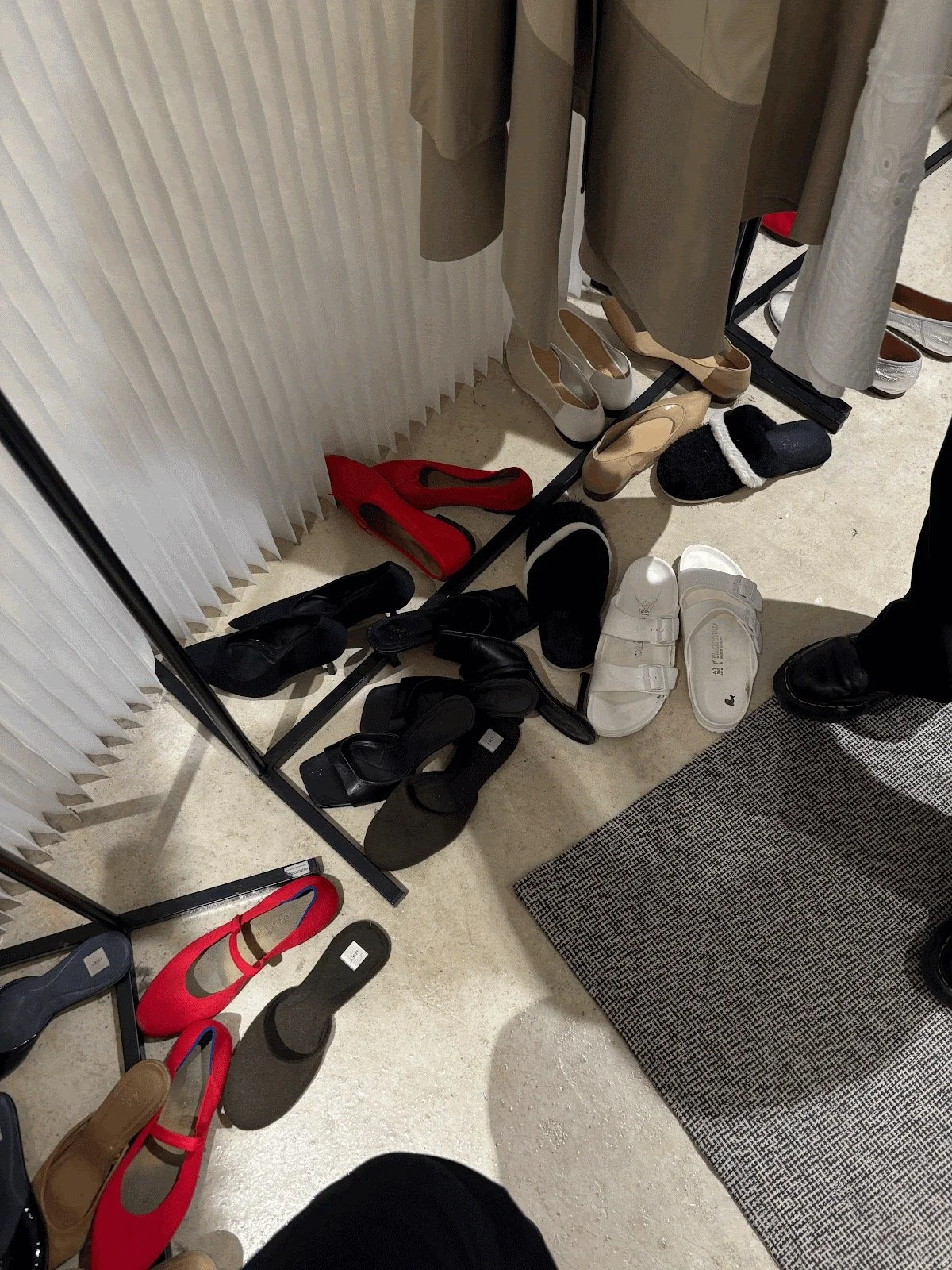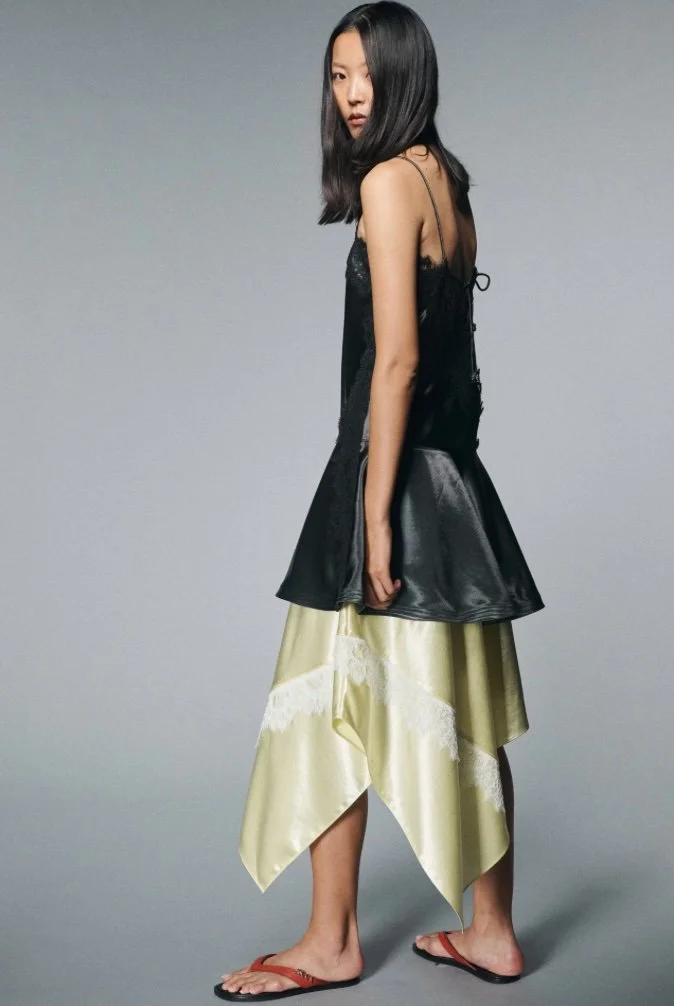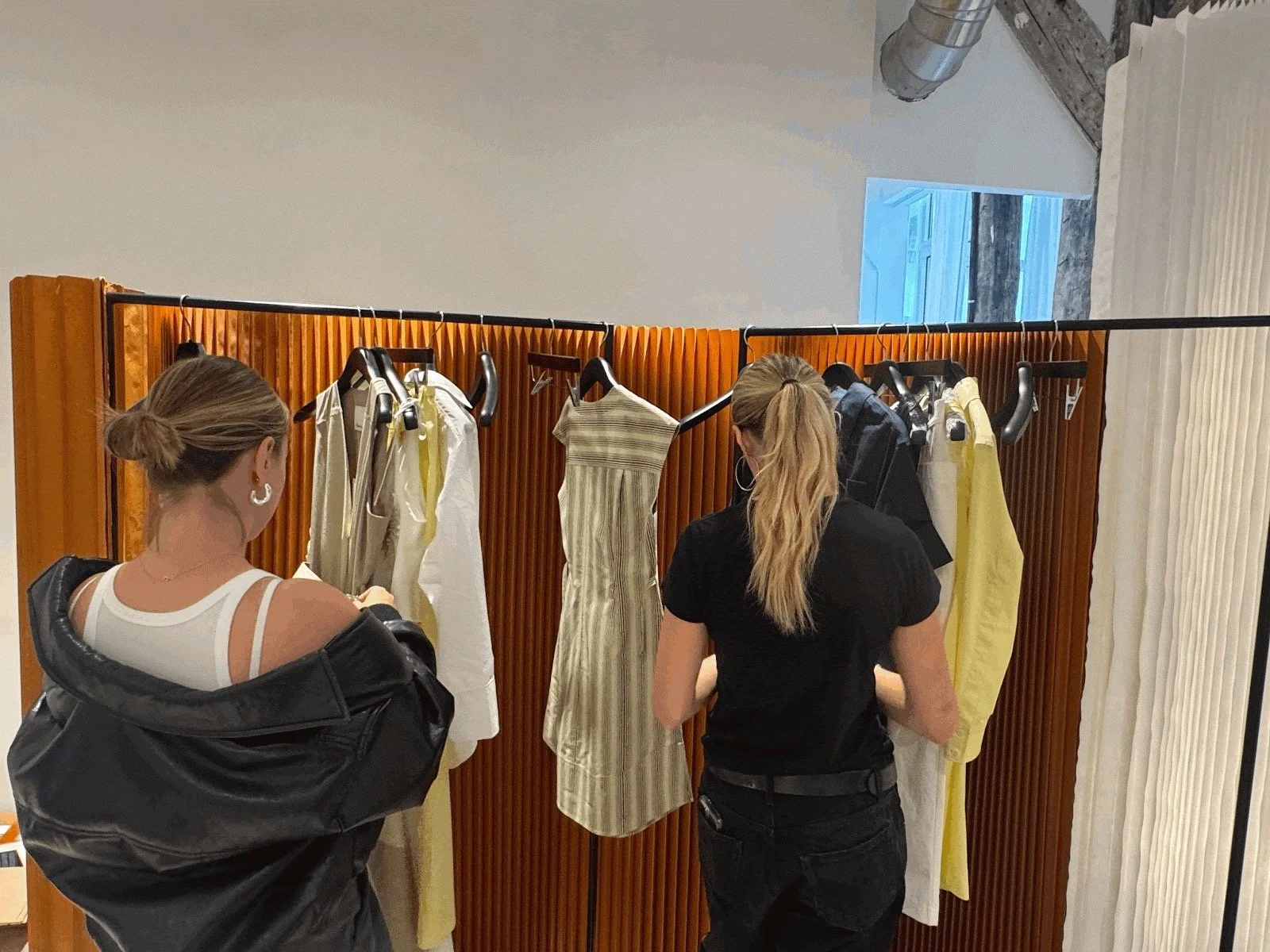Why You Should Know About Paris Market Week
Written by Chloe Obolensky
Photo credit: Meryl Streep and others in ‘The Devil Wears Prada’ 2006
To any true fashion connoisseur, Paris Fashion Week is the ultimate mecca for runway shows and debut collections. This past month, iconic houses like Dior,Chanel, and Saint Laurent created dazzling spectacles of glamour with their Spring 2026 collections.
But amid all the allure, a vital question often goes unasked:
How does what happens on the Paris runways influence what you’ll be wearing next spring?
If you've ever seen The Devil Wears Prada, you might recall Miranda Priestly’s now-iconic monologue about a seemingly inconspicuous cerulean sweater. What appears to be a random fashion choice, she reveals, is ultimately the result of an intricate system that involves a team of designers, editors, retailers, and manufacturers.
“You think this has nothing to do with you but… that blue represents millions of dollars and countless jobs.” (Devil Wears Prada, 2006)
With that one line, Miranda Priestly unlocked the complex machinery behind fashion and shines a light on the quieter, yet equally crucial, side of the industry: Paris Market Week.
Photo credit: Chloe Obolensky
What is Market Week:
Coinciding with Fashion Week, Market Week is what can only be described as Fashion Week’s engine room. It’s a side of fashion you rarely see-yet it influences you more than you may realize. While the runway commands the spotlight, Market Week is where the business of fashion happens, and where the pieces you admire on the model make their way into your hands.
Across curated showrooms, global buyers from luxury department stores to independent boutiques arrive with the one goal of selecting what you will buy.
Whether you live and breathe fashion or, like Andy Sachs, think it’s “just clothes,” understanding the industry’s backend is essential. Often fashion can be dismissed as superficial or unimportant, but Market Week reveals just how deeply significant it truly is - influencing everyone, whether they realize it or not.
My Experience:
This season, I had the incredible opportunity to work with the New York-based brand Phillip Lim during Market Week, while they debuted their newest collection. The line featured a refreshing blend of vibrant yellows, delicate lace, tweed cardigans, and structured denim, a modern take on timeless tailoring that was just as striking in person as in the photos.
Photo credit: Phillip Lim
Photo credit: Phillip Lim
With a strict call time of 8:45 a.m., on October 2nd, I arrived to a showroom already buzzing with activity. Racks of clothing from global designers lined the walls, garments were being steamed by interns in the halls, and models stood ready for long hours of fittings and re-fittings.
As an intern, my role was simple but crucial: manage and maintain the controlled chaos. Interns stand by awaiting the buyer to choose their wanted pieces and then take those specific styles to the models in the back. It is then that another team of interns will ensure each look is presented well and aligns perfectly with the buyer’s vision. Then after each session, it is up to them to reset the showroom like new - steaming, organizing, and preparing for the next wave.
The process was nothing if not methodical.
When the doors opened at 9:00 a.m., reality hit immediately. The first buyer from Thailand selected ten pieces… then another ten… then five more from the rack, requesting to see each on the model. The seller then recommended pieces tailored to their specific market, and I dashed between the showroom and changing rooms, managing the flow of garments amidst a sea of models from various brands receiving the same instructions.
Dressing the models required a delicate balance of speed and precision. Belts tightened, tags tucked in, buttons fastened. Every detail mattered. After each outfit was tried on, it went back to
the buyer for the ultimate decision. Sellers tallied orders, and we began the cycle anew: steaming, organizing, setting up… repeat. And repeat. And, yes, repeat again for seven days straight for clients all around the globe.
Photo Credit: Sahari Abney
The Grit Behind the Glamour:
Despite the elegance of the clothes, the work was anything but glamorous. Nine-hour days with ten-minute breaks were standard. Models rotated through the same looks for hours at a time, showroom staff fielded endless requests, and every garment had to be handled with the utmost care. It was a tightly choreographed performance, but without the celebrity applause.
Unlike the runways this wasn’t about fantasy, it was about business. Buyers didn’t just see clothes; they saw customer profiles and the numbers of what would inevitably sell for their clientele. Every decision carried weight, balancing artistry with reality.
The Truth:
In fashion, it’s easy to get swept up by the spectacle—the shows, the celebrities, the dream. When I told people I was working within the realm of Paris Fashion Week, I was met with celebration and envy. But the truth is, it’s no easy feat. It’s a meticulous, often grueling process that demands not only time but, patience and precision. Paris Fashion Week creates the façade of effortlessness and Paris Market Week strips away the fantasy and reveals the reality behind the dream.
And yet, it matters deeply. This is where the trends we’ll wear next year are born. The styles you spot on the street today were carefully chosen in spaces like these, amid the showroom’s polished chaos.
So next time you step into a store, remember it’s not just clothes you’re buying. It’s a complex, vibrant ecosystem - crafted with care and tailored just for you.





